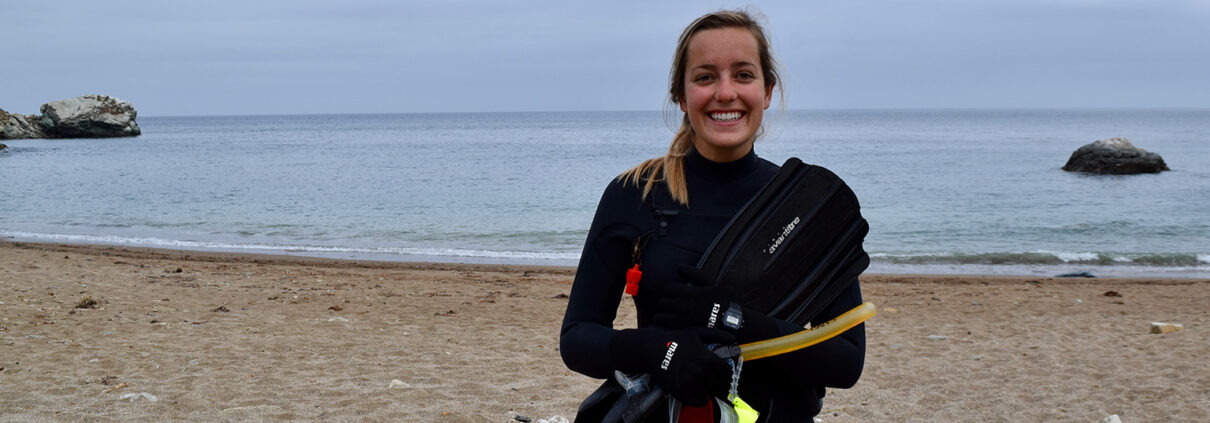I would say the unifying thread between all of my career decisions has been communication and teaching, starting when I was in high school. I was in a zoology and botany class and we got to go on a multi-day trip to Catalina Island for a marine biology educational program, and I thought it was the most amazing place ever. I loved that it combined science learning with application, and it made everything an adventure that got people out of their comfort zones. It was the perfect experience to inspire ocean stewardship, and it really made me want to go into ocean sciences.
For a while I was a camp counselor, being outdoors and working with students and kids, and once I got to college I wanted to apply that to the marine education space. I ended up working at an outreach aquarium on campus, working in hands-on science communication for a wide array of audiences. After my degree I actually went back to that same camp on Catalina that I went to in high school, this time as a marine science instructor. I loved getting to do marine science and outdoor education as my full time job. When it was time for me to find a more permanent career track, I thought about how I could leverage my teaching and communication skills into a different type of ocean conservation -related work. I did some research and arrived at this policy space – everyone had been talking about the gap between scientists and policy-makers, and how we need to work at that nexus in order to make sound policy decisions. That sounded like a niche I could contribute to and after some additional digging I decided that pursuing a graduate degree would help prepare me for a career in ocean policy.
I went with the Environmental Policy and Management program at UC Davis for my Masters, where I got to do some work with the SeaDoc Society, looking at how the science they’ve produced has been used to inform policy and decision making. It made me realize that there’s all these things we can do throughout the research process to increase the likelihood of scientific results being used for policy, and to me that’s where science has the biggest value. Science isn’t necessarily useful, but when you can translate it into something actionable and actually effect change with it, that’s where the power really is.




